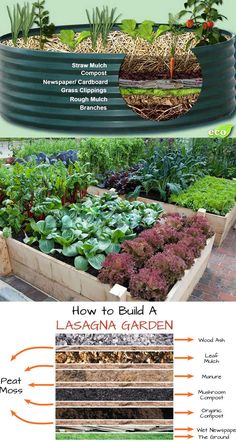
If you’re like most gardeners, you probably consider August to be the tail end of the growing season. The truth of the matter is that it’s a great time to start your fall garden.
A fall garden can produce excellent vegetables and extend your crops long after your spring planted garden is finished. The vegetables you harvest from the fall garden are often sweeter and milder than those grown over the summer.
What type of vegetable plants you plant in your fall garden will depend on the space you have, as well as the types of vegetables you like. Be sure that you plant vegetables with the shortest growing season, this will increase the chances they will be full grown and harvested before the hard frost sets in. Starting your seeds indoors the first week of July will also give you a good head start.
Most seed packages will be labeled “early season”, or you can find the seeds that are labeled with the fewest days to harvest.‚Â Since seeds are not usually kept in stock towards the end of summer, you will probably need to purchase seeds for your fall garden in the spring. You can also find them easily online.
Even vegetables that like the heat of summer, like tomatoes, sweet potatoes, and peppers, will produce nicely until harder frosts hit, which can be fairly late in the year in certain areas.
There are certain vegetable plants that normally stop producing towards the end of summer. These include snap-beans, summer squash, and cucumbers. Even these, if planted in the middle of summer, can produce nicely until the first frosts arrive. Many hardy vegetables will grow with temperatures as low as 20 degrees.
If you have root plants such as beets, carrots or radishes, that have the tops killed by a freeze, you can save them by applying a heavy layer of mulch.
For fall gardening you need to know approximately when the first hard frost normally hits your particular area. The Farmer’s Almanac is a great resource for this type of information. It will give you specific dates and is fairly accurate most of the time. You also need to know approximately how long your plants will take to mature. As I said, this is available by reading the individual seed packets.
To prepare the soil for your fall garden, the first thing you will need to do is clear out leftover summer crops and weeds. If you leave the leftover vines and plant debris from your summer crops, bacteria and diseases can develop from these leftover remnants. If your spring plants were not fertilized heavily, you may want to spread a few inches of compost over the garden next.
Once that is done you will need to till the soil and wet it down. Now simply wait 24 hours and your ready to plant.
All too often gardeners will shy away from planting a fall garden, to avoid dealing with frosts. I can tell you from experience that sturdy and healthy vegetables can stand up to a few frosty nights, while producing wonderfully tasting produce.
Fall gardening is not for everyone, but why not give it a try? It can provide you with the opportunity to enjoy garden fresh vegetables for a little while longer each year.
